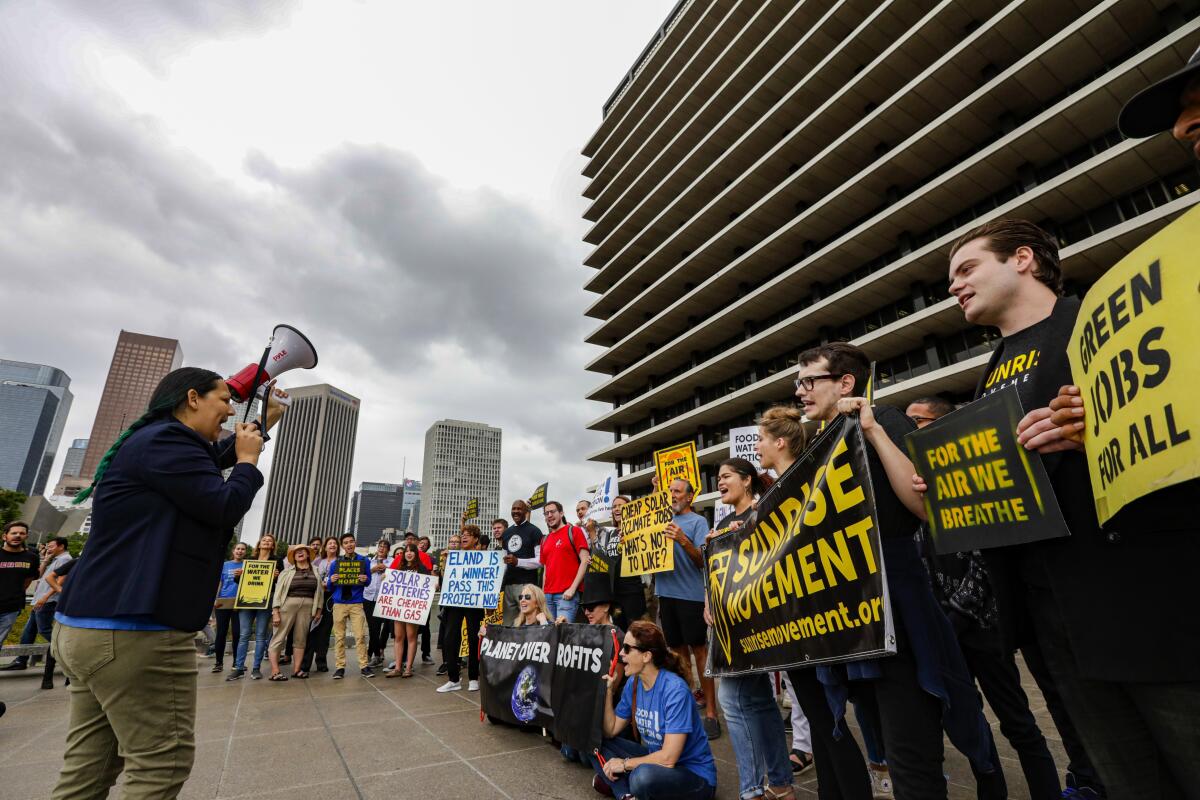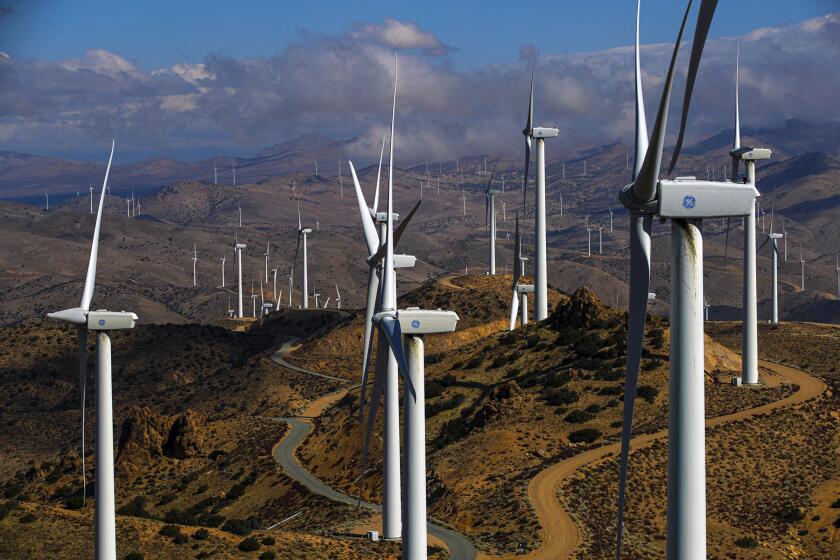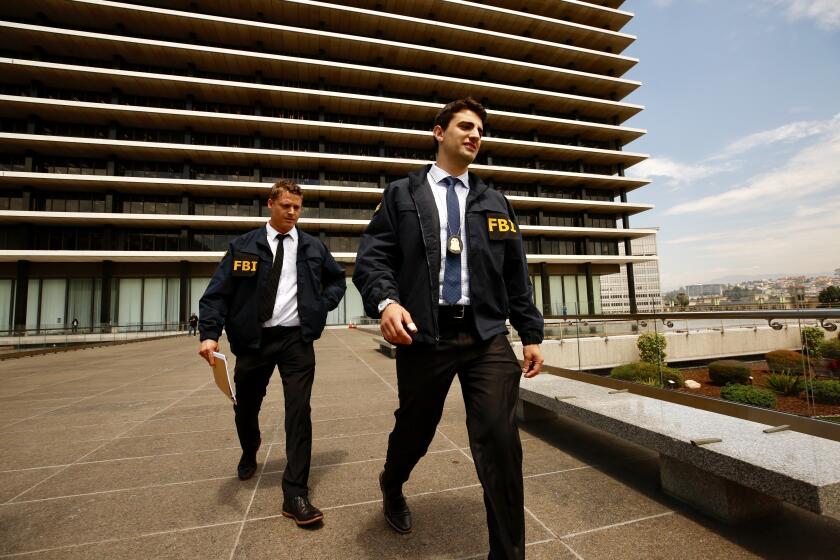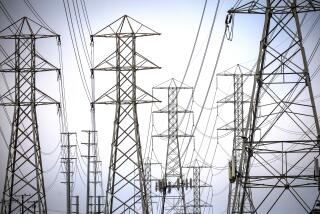Commentary: The LADWP is charging outdated power rates, and there’s no easy fix

When the Los Angeles Department of Water and Power adopted its “time-of-use” electricity rates in 2008 to encourage less power consumption during peak hours, George W. Bush was still president, the utility got nearly half of its electricity from coal and solar was only a small contributor to the city’s power supply.
A lot has changed since then.
There’s now an abundance of inexpensive solar and wind power in the middle of the day, so much that the state directed investor-owned utilities to adopt time-of-use rates that incentivize customers to run appliances and consume electricity at midday to take advantage of that cheap green power. The highest rates are charged from 4 to 9 p.m., when the sun goes down and the grid relies more on dirtier, gas-fired power plants.
But not for Angelenos. Despite the change in the electricity market, the DWP has kept its obsolete time-of-use rates in place that charges the most between 1 and 5 p.m. About half of the electricity delivered to DWP customers is billed on time-of-use rates. Most of those are commercial and large-scale customers; a small percentage are residential customers. (Other customers pay standards rates based on how much power they use rather than when they use it.)
After five years of study, we now know it’s possible to run Los Angeles on 100% renewable energy. Now comes the hard part.
That means the DWP is charging some customers more when power is actually less expensive to produce, thanks to renewables, and its price signal encourages these customers to use electricity in the evening when the power is more likely to come from dirtier, carbon-intensive energy sources.
Fred Pickel, the utility’s in-house ratepayer advocate, warned in a report earlier this year that the outdated price signal is “an urgent situation” in a state that has periodic power shortages in the evening and relies on customers curtailing use to avoid blackouts.
Yet the DWP has been unwilling and, to a certain degree, unable to fix the problem for reasons that have more to do with voters, politics and scandal than with the electricity market.
The hours of the DWP’s highest time-of-use rates — 1 to 5 p.m. — are written into the 2008 ordinance. To change the hours, the DWP and the City Council must change the ordinance. But if they change the ordinance, the city will trigger Proposition 26, the 2010 ballot initiative that bars government from charging more for a service than it costs to provide it.
The 2008 ordinance setting electric rates was passed before Proposition 26, so it’s exempt. But if the DWP revises or adopts a new rates ordinance, that opens the door to Proposition 26 lawsuits challenging the utility’s entire electricity rate structure, which includes important things like reduced costs for low-income customers and the annual $200-million-plus transfer to the city budget to pay for police, fire and other services.
Bribery and corruption cases are piling up at L.A. City Hall. At what point will Mayor Eric Garcetti and City Atty. Mike Feuer take responsibility?
Someone could argue the DWP is charging ratepayers more than the actual cost of electricity in order to subsidize city services and low-income customers, in violation of Proposition 26. (Lifeline rates are standard practice among utilities and the transfer is essentially a payment in lieu of taxes that a private utility would pay to the state, but because DWP is a city-owned utility, Proposition 26 applies.)
Nevertheless, fear of opening the Proposition 26 Pandora’s box has stopped the DWP from modernizing its outdated rate structure.
There is a possible fix. The DWP and the City Council could go to city voters and get explicit permission for the low-income rates and the transfer, which would negate Proposition 26. The utility considered putting measures on the November ballot, but there wasn’t much interest or support from City Hall.
It’s no wonder why. Two former DWP executives are going to prison for their role in a bribery scheme related to the faulty billing system and there’s an ongoing federal corruption investigation involving the utility. It’s a bad time to ask voters to trust the DWP, particularly when it comes to something as complex and controversial as rate restructuring. But the reality is, the DWP has to modernize its rates to match the rapidly changing electricity market and facilitate the transition to cleaner, greener energy.
For now, the DWP remains stuck in 2008.
More to Read
A cure for the common opinion
Get thought-provoking perspectives with our weekly newsletter.
You may occasionally receive promotional content from the Los Angeles Times.













